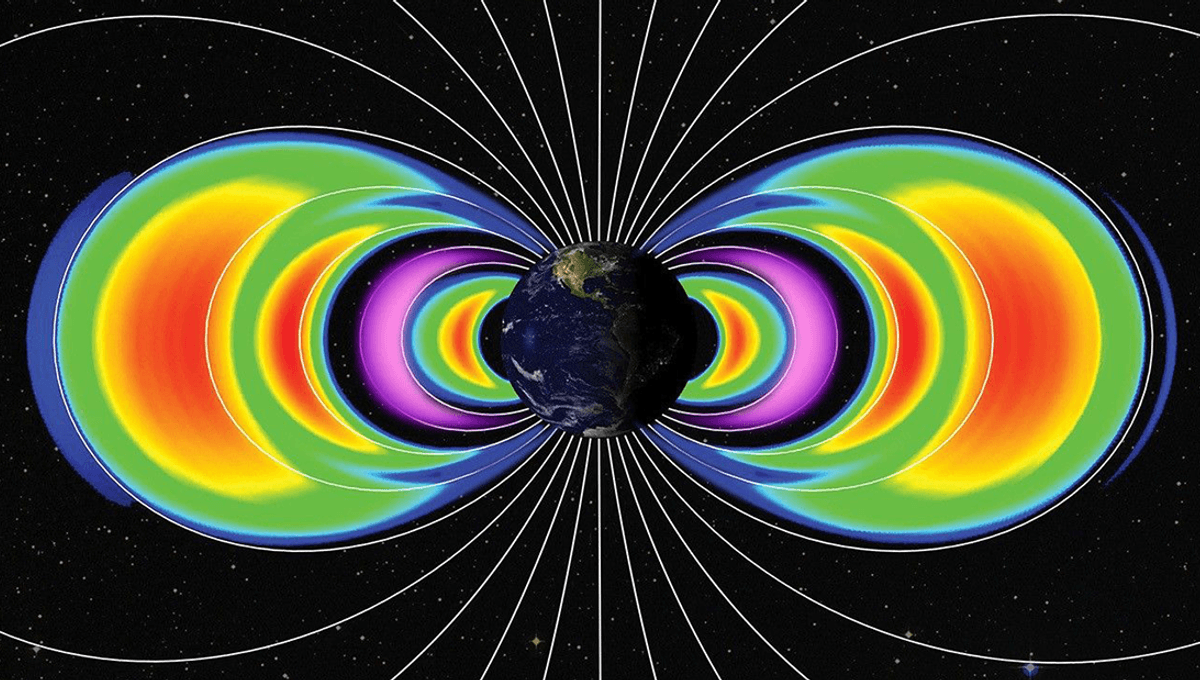
2024’s gigantic solar storm gave the Earth two new temporary radiation belts, according to NASA’s CubeSat mission. One of these belts could stay in place for a “very long time”, according to NASA scientists.
ADVERTISEMENT GO AD FREE
Just beyond low-Earth orbit, the planet is surrounded by radiation belts sometimes called the Van Allen belts after astrophysicist James Van Allen who described them in 1958.
“The Earth’s magnetosphere traps the high energy radiation particles and shields the Earth from the solar storms and the constantly streaming solar wind that can damage technology as well as people living on Earth,” NASA explains.
“These trapped particles form two belts of radiation, known as the Van Allen Belts, that surround the Earth like enormous donuts. The outer belt is made up of billions of high-energy particles that originate from the Sun and the inner belt results from interactions of cosmic rays with Earth’s atmosphere.”
These permanent belts are made of a mix of electrons and protons, with the inner belt being composed of energetic protons and electrons, and the outer belt mainly containing high energy electrons, all bound to Earth by the planet’s magnetic field. As well as these permanent radiation belts, the Earth can occasionally pick up temporary radiation belts, the result of high-energy particles being flung our way during solar storms.
Last year was pretty spectacular in terms of solar storms as the Sun approached the solar maximum, with a particularly large one taking place in May, creating spectacular aurora and previously-unseen vortices in Earth’s atmosphere. Thanks to NASA’s Colorado Inner Radiation Belt Experiment (CIRBE), we now know that the storm also gave the Earth two new radiation belts sandwiched between the permanent ones.
ADVERTISEMENT GO AD FREE
“When we compared the data from before and after the storm, I said, ‘Wow, this is something really new,’” lead author of a new study, Xinlin Li, said in a statement. “This is really stunning.”
These belts, studied over the course of months, appear to have stuck around longer than previous temporary belts. Previous electron belts have lasted around four weeks, but these new belts appear to have more longevity. The outer of the two belts, composed largely of high-energy electrons, persisted for over three months before another storm in June knocked it around and decreased its size, and then a further storm in August shrank it to a small population of electrons. Further study of temporary belts like this could provide insights beyond radiation belts.
“The persistence of the new electron belt (1.3–5 MeV) around L = 2.5–3.5 provides a good case for investigating their lifetimes due to interactions with plasma hiss waves as a function of energy, local plasma density, and magnetic field strength,” the team writes in their study. “The significant decay after another storm (on 6/28) also provides a good case study for investigating other wave-particle interactions, such as EMIC [Electromagnetic Ion Cyclotron Waves] and chorus waves that scatter high energy electrons into the atmosphere, which will be investigated in the future.”
The second belt, composed of protons and electrons, has persisted even longer due to a more favorable position where the particles that make it up are less likely to be deflected out of their orbit.
ADVERTISEMENT GO AD FREE
“The stability of the new proton belt is consistent with current understanding that their loss is mainly due to collisions with free and bound electrons, which is not significant over the observed period,” the team explained. “Thus, the new proton belt is expected to last much longer, perhaps over a year.”
“These are really high-energy electrons and protons that have found their way into Earth’s inner magnetic environment,” David Sibeck, former mission scientist for NASA’s Van Allen Probes and research scientist at NASA’s Goddard Space Flight Center in Greenbelt, Maryland, who was not involved in the study, added. “Some might stay in this place for a very long time.”
While the CubeSat did its job well, providing valuable insight into the temporary radiation belts, the solar storms ended up cutting its mission short, pushing the satellite out of orbit in October.
“We are very proud that our very small CubeSat made such a discovery,” Li added.
ADVERTISEMENT GO AD FREE
The study is published in the Journal of Geophysical Research: Space Physics.
Source Link: Giant Solar Storm Gave Earth A New Proton Belt, NASA's CubeSat Mission Finds